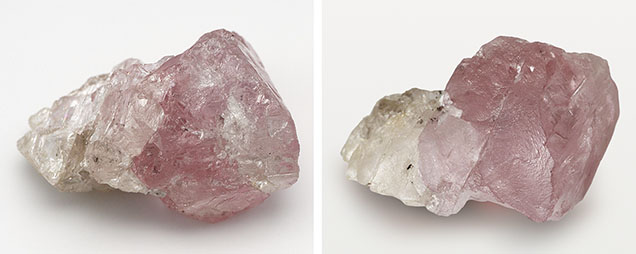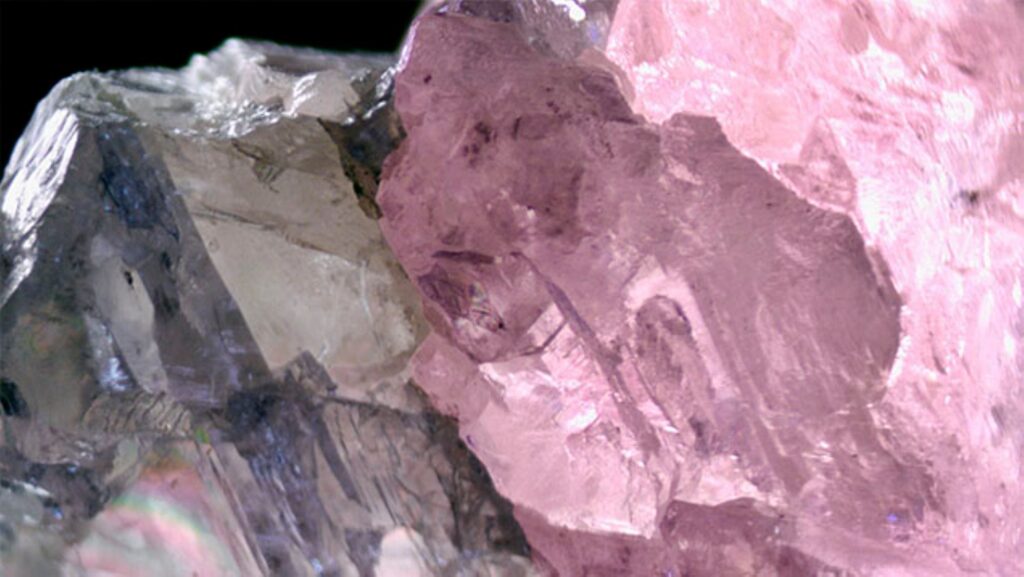Miners have unearthed a rare bicolored natural diamond in Botswana. Experts say the diamond was likely formed in two stages.
Half of the diamond is pink and half is colorless. It measures approximately 1 x 0.63 x 0.57 inches (24.3 x 16 x 14.5 millimeters) and weighs an “astonishing” 37.41 carats (0.25 ounces, or 7.5 grams), according to the Gemological Institute of America (GIA), a nonprofit research center based in Carlsbad, California.
The pink half likely formed first, but from what scientists know about colorful diamonds, it likely wasn’t always rosy, Sally Eaton Magaña, GIA’s senior manager of diamond identification, said in a statement emailed to Live Science. “The pink areas were probably initially colorless, but were plastically deformed to become pink, perhaps by a mountain-forming event millions of years ago, and the colorless areas may have formed subsequently,” she said.
you may like
Pink diamonds are extremely rare, and it is still unknown exactly how they are formed. Diamonds are born more than 100 miles (160 kilometers) from Earth’s surface, inside a planetary layer called the mantle. Extremely high temperatures and pressures bind carbon atoms into a tight lattice, and this structure quickly rises to the surface through volcanic activity, yielding rough diamonds.
Diamonds sometimes get their color from impurities trapped within the lattice, but this is extremely rare as few elements are small enough to penetrate the mineral structure. Another way diamonds become colored (usually green) is through radiation, when nearby rocks contain elements such as uranium that can “steal” carbon atoms and create vacancies in the mineral structure.
However, pink diamonds are the product of tectonic deformation, meaning their lattice structure has been bent and compressed by geological processes. For a diamond to turn pink, conditions of temperature and pressure must be right, as too much deformation will turn the gemstone brown.
“This is like Goldilocks,” Luc Doucet, a senior research geologist at Australia’s Curtin University, previously told Live Science. “There are a lot of brown diamonds, but there are very few pink diamonds.”

According to GIA, for a diamond to have two distinct color zones, it must be formed in two stages. First, assemble and transform the pink halves. Then the colorless halves germinated, and their lattices were not affected by temperature or pressure.
The new diamond is not the first natural pink and colorless diamond ever discovered. However, GIA experts said similar diamonds they have examined are much smaller, weighing less than 2 carats (0.014 ounces, or 0.4 grams).
This new discovery comes from the Karowe mine in Botswana, which has previously produced spectacular diamonds. For example, GIA said it is where the second-largest rough diamonds ever recovered, a 2,488-carat (1.1 pound, or 0.5 kilogram) behemoth known as the “Motswedi” diamond, and the 62-carat (0.44 ounce, or 12.4 grams) “Boitumelo” pink diamond were discovered.
Source link

